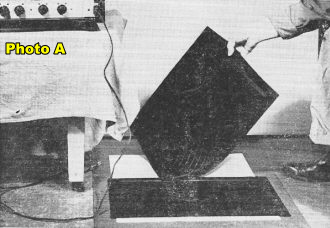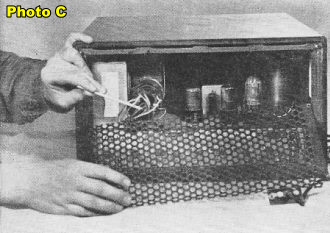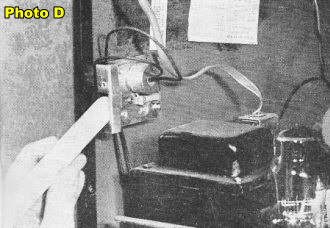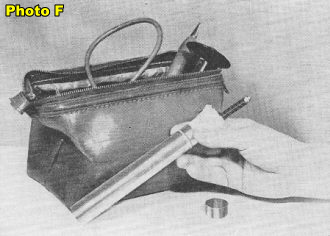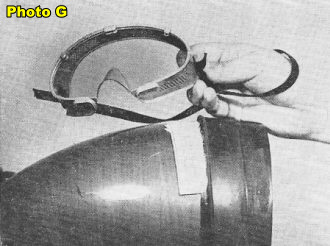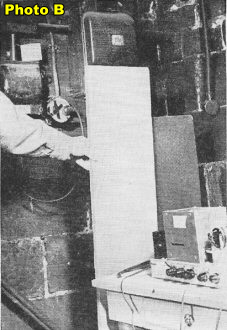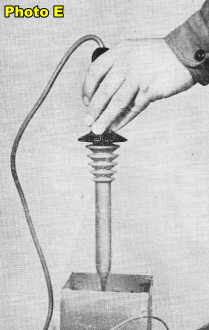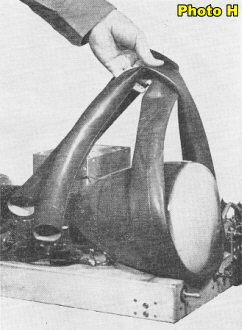High Voltage Service Hints
|
|
If you have never received a major electrical shock, you might be tempted to be a little lax when working around high voltage. However, once you get your first taste of the jolt, you will probably never forget it and will be very mindful of safety in the future. I got my share of 120 V and 240 V shocks during my days as an electrician. Minor shocks feel like a vibrating twinge of pain that just scare the crap out of you, while more severe instances feel like getting jabbed in the finger(s) with a pick - at least that has been my experience. I got hit by 408 V once while working on a 3-phase air compressor for an auto body shop - that was during high school while in the electrical vocational program. While working on radar in the USAF, I saw a guy get bitten by 10 kV from a CRT display circuit - it left a burn hole in the tip of his finger. You might think after all that I would always be sure to turn off circuit breakers before working on stuff, but unless I thinks there's a real danger of getting shocked, I still will change out a light switch or receptacle on a live circuit in order not disturb other things being powered by it. Some people never learn ;-) High Voltage Service Hints
Most of us enjoy seeing our names in print - but nobody wants to be featured in the obituary column. Every so often a nasty reminder comes along that service technicians - even the most experienced ones - are not shockproof. The most recent of these was the death of a Chicago technician - electrocuted by the h.v. circuit of a television receiver. (See Radio-Electronics for September, 1952, page 90.) In spite of the obvious hazards of high-voltage circuits, a far greater number of fatalities are caused by contact with that little old 117-volt line which many of us regard with such contempt. And the B supply circuits of modern TV receivers - with their extra-high-capacitance electrolytics - can store more death-dealing energy than any present-day h.v. supply. Remember, it takes less than 150 ma to kill a normal, healthy human being. A quick look at Ohm's law (E=IR) will show you that very little voltage is required to push that current through your body if its resistance is low enough. Keep your body resistance as high as possible, and avoid any contact with the live circuits of a receiver. At times, unfortunately, many of us forget the fact that the live circuits may include the chassis, or any grounded object (even the floor). Every service shop should have a wooden floor. Where work must be done in homes or other locations with cement floors, insulate yourself from the floor with rubber mats. These mats are about 13 x 21 inches and are obtainable at any auto or department stores - inexpensively. (Photo A) Dry boards may be used for the same purpose. A few 1-inch-thick boards about 10 x 60 inches will provide a safe working platform. They should be stood on end to dry when not in use. When testing or repairing equipment near water pipes, radiators, steam pipes or grounded electrical conduits and switches, wood or Masonite boards provide the necessary margin of safety. (Photo B) A long, dry, wood stick or plastic rod is the best tool for probing around wiring near the picture tube or other live parts. (Photo C) Where line-interlock switches must be held in the closed position with the receiver back off a wood tongue depressor is a lot safer than a screwdriver. Even if you're using only one hand inside the cabinet you might come in contact with the blade. (Photo D) Always hold a high-voltage probe so that the guard ring is between your hand and the high voltage. Keep your hand closed and away from the probe lead. (Photo E) Don't depend on the wire insulation to protect you if the internal multiplier resistor should break down or arc over. High-voltage probes are easier to carry, store, and keep dry, if they are taken apart. With the probe dismantled the multiplier resistor should be kept in a toothbrush container lined with soft, dry loth. A small zipper bag is an ideal carrying case. (Photo F) The outside of the probe should always be wiped dry before and after use. Moisture inside the probe can be removed with a narrow bottle brush. Wearing goggles while handling picture tubes is a common-sense precaution repeatedly emphasized by the tube manufacturers themselves. They should know. Still, many technicians refuse to wear them, especially if they already wear glasses. These impact-resistant goggles weigh only about 3 ounces and can be worn comfortably even over ordinary eyeglasses. They give unobstructed vision and cover considerably more of the face than the usual type. (Photo G) Some picture tubes rest loosely on the metal chassis when the set is removed from the cabinet. An old bicycle inner tube makes a handy protective bandage. The ends of the inner tube can be anchored to the chassis to hold the picture tube firmly and safely in position. (Photo H)
Posted November 19, 2021 |
|

 By H. Leeper
By H. Leeper 